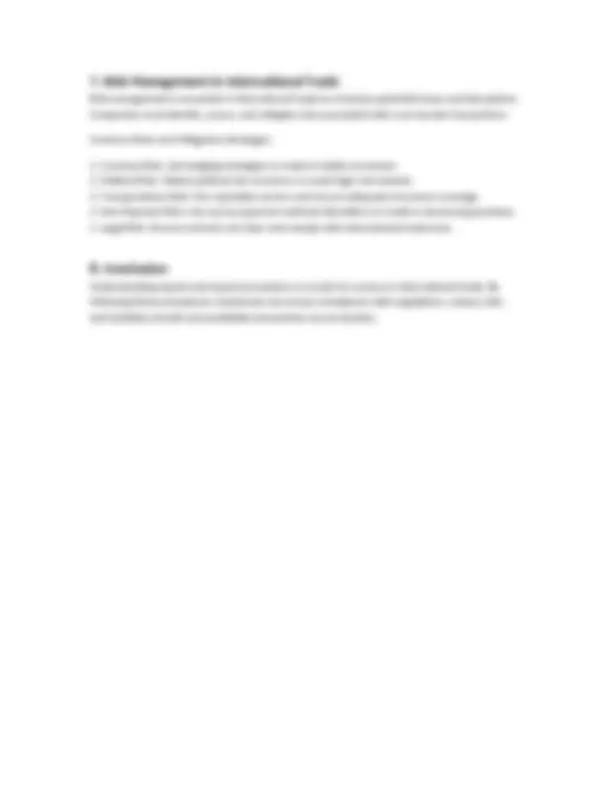




Study with the several resources on Docsity

Earn points by helping other students or get them with a premium plan


Prepare for your exams
Study with the several resources on Docsity

Earn points to download
Earn points by helping other students or get them with a premium plan
Community
Ask the community for help and clear up your study doubts
Discover the best universities in your country according to Docsity users
Free resources
Download our free guides on studying techniques, anxiety management strategies, and thesis advice from Docsity tutors
A comprehensive overview of the key steps and considerations involved in export and import procedures for international trade. It covers topics such as market research, product adaptation, pricing strategy, documentation, shipping and logistics, customs clearance, payment methods, incoterms, customs compliance, and risk management. The detailed information presented can help businesses navigate the complexities of cross-border transactions, ensure regulatory compliance, and mitigate potential risks. Structured with a clear table of contents and covers a wide range of essential aspects of export and import procedures, making it a valuable resource for those engaged in or interested in international trade operations.
Typology: Lecture notes
1 / 4

This page cannot be seen from the preview
Don't miss anything!



Export procedures involve a series of steps that must be followed by a company intending to sell goods to a foreign country. These steps ensure that the exporter complies with both domestic and international trade regulations. Key Steps in Export Procedures:
Import procedures involve steps that must be taken by a company to bring goods into a country from abroad. Understanding these procedures is crucial for ensuring that the import process is efficient and compliant with regulations. Key Steps in Import Procedures:
Documentation is a critical component of both export and import procedures. Accurate and complete documentation ensures compliance with legal requirements and facilitates smooth transactions. Key Export and Import Documents:
Payment methods in international trade are essential for managing risk and ensuring that both parties fulfill their obligations.
Risk management is essential in international trade to minimize potential losses and disruptions. Companies must identify, assess, and mitigate risks associated with cross-border transactions. Common Risks and Mitigation Strategies:
Understanding export and import procedures is crucial for success in international trade. By following these procedures, businesses can ensure compliance with regulations, reduce risks, and facilitate smooth and profitable transactions across borders.